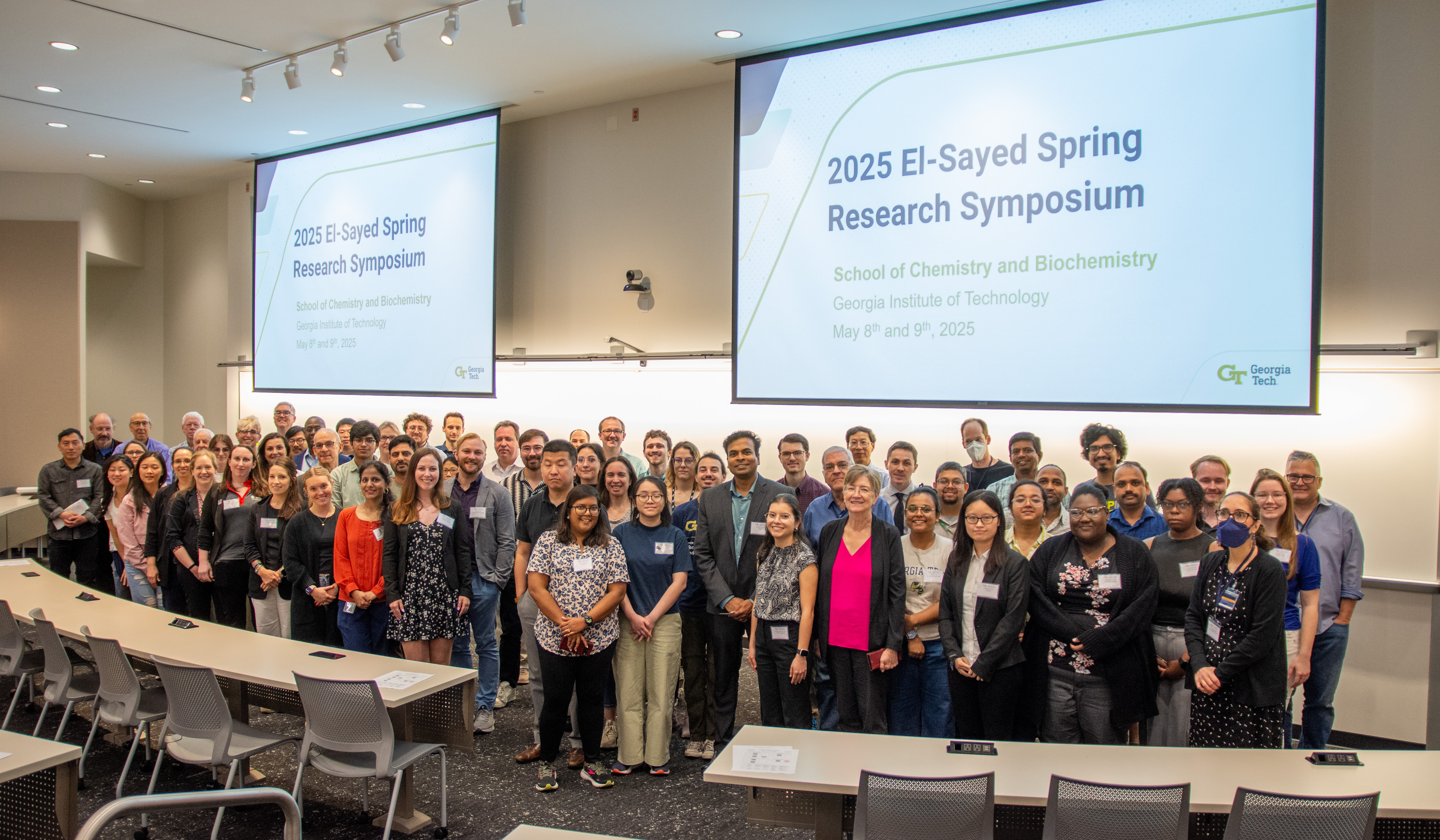
Attendees of the 2025 Spring Research Symposium. (Photo by Angus Wilkinson)
 | Under Pressure: Georgia Tech Researchers Discover a Potential New Way to Treat GlaucomaNewly discovered antibodies break down the protein that causes glaucoma. |
There are currently no scheduled events.
Warming waters are causing the colors of the ocean to change — a trend that could impact humans if it were to continue, according to new research.
Satellite data shows that ocean waters are getting greener at the poles and bluer toward the equator, according to a paper published Thursday in the journal Science by a research team that included Haipeng Zhao, postdoctoral fellow in the School of Earth and Atmospheric Sciences (EAS), and Susan Lozier, College of Sciences Dean, Betsy Middleton and John Clark Sutherland Chair, and EAS professor.
The change in hue is being caused by shifting concentrations of a green pigment called chlorophyll, which is produced by phytoplankton
The presence of chlorophyll in open ocean is a proxy for concentrations of phytoplankton biomass. The colors indicate how chlorophyll concentration is changing at specific latitudes, in which the subtropics are generally losing chlorophyll, and the polar regions — the high-latitude regions — are greening, the researchers said.
Similar stories appeared at San Francisco Chronicle, Miami Herald, Oceanographic Magazine, Earth.com, and Good Morning America.
ABC NewsGeorgia Tech alum Miriam Guthrie (EAS 2025) answers a reader question about her experiences as a meteorologist intern at The Weather Channel and shares advice on how to prepare for a career in meteorology. Here is an excerpt of her response:
“A passion for weather is important [and] I would suggest really focusing on your math and science classes to prepare for the right school. When you're taking those hard math classes and you feel like you want to give up, remembering why you're passionate about this is really gonna help.
“I decided to go to Georgia Tech because it's a really good school for math and science, and I knew that that was something that I wanted to pursue.
“My time at the Weather Channel so far has been awesome. I love teaching people about the weather, and it's been exciting the past few days with the first hurricane of the year, Hurricane Erick, just with the chaos of it all. It's a fun job, but it is a chaotic kind of fun.”
The Weather ChannelA volcano seems to have been identified near the rim of Jezero crater on Mars, which is being explored by NASA’s Perseverance rover. The rover has been collecting samples that were intended to be returned to Earth as part of the Mars Sample Return mission in the 2030s.
Some of the material in the samples was thought to have been volcanic, including signs of lava flows. Now, James Wray, professor at Georgia Tech’s School of Earth and Atmospheric Sciences, and his colleagues have found a possible source – a dormant volcano on the south-eastern rim of Jezero named Jezero Mons.
High-resolution imagery from Mars orbiters have revealed fine-grained material on the mountain, consistent with ash from a volcano. The size and shape of Jezero Mons – 21 kilometres wide and two kilometres tall – also matches similar volcanoes on Earth.
“An igneous volcano interpretation seems most consistent with the observations,” says Wray, one fuelled by magma from below the surface. “It’s the strongest case we can make without actually walking across it.”
By counting craters near the volcano, Wray and his team estimate that Jezero Mons may have last erupted as recently as 1 billion years ago, possibly flinging ash, lava and rocks into Jezero crater, even as far as Perseverance’s landing site.
Similar stories appeared at 11 Alive, Science Alert, Earth Sky, ZME Science, and Gizmodo.
New Scientist